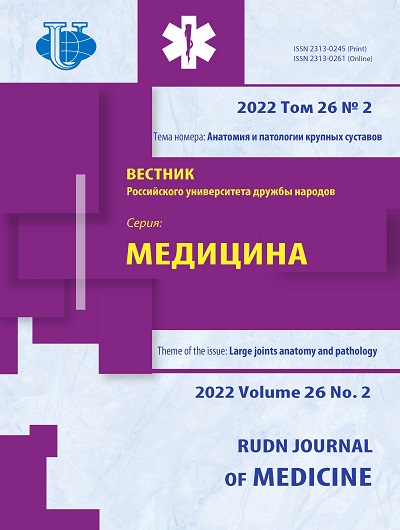Young people awareness about possibility of transmitting microorganisms by kissing
- Authors: Streltsova T.A.1, Chislova I.A.1
-
Affiliations:
- Saint-Petersburg State University
- Issue: Vol 26, No 2 (2022): LARGE JOINTS ANATOMY AND PATHOLOGY
- Pages: 180-187
- Section: MICROBIOLOGY
- URL: https://journals.rudn.ru/medicine/article/view/31079
- DOI: https://doi.org/10.22363/2313-0245-2022-26-2-180-187
- ID: 31079
Cite item
Full Text
Abstract
Relevance. Currently, many ideas about the manifestation of emotions between people are changing, but kissing remains one of the most important forms of social interaction. There is a lot of information about the multitude of pathogens transmitted with kisses, however, most people are not aware of it. This topic is not paid enough attention to, both in society as a whole and among the youth audience. The aim of the study . This research aims to identify the degree of awareness among young people about the possibility of transmission of various microorganisms during kissing, as well as to determine the relevance of this problem . Materials and Methods. Analysis of scientific literature on microorganisms transmitted by contact of the mucous membranes of the oral cavity. The empirical method consisted of testing, which involved 140 people aged 16 to 25 years. The survey included six questions to assess the level of knowledge about infectious agents transmitted with kisses, as well as the relevance of this topic among young people. Results and Discussion. The survey reveals that 97 % of respondents know that the transmission of bacterial infection is possible with a kiss, while 57 % have heard about the danger of transmission of only some microorganisms or do not know about them at all. Every sixth participant of the survey (18 %) has personally encountered or knows from acquaintances that they have suffered from infectious diseases caused by kissing. 88 % of respondents believe that this topic is poorly covered in the media. It should be emphasized that 91.4 % of the respondents would like to learn more about this topic. An average of 65 % of respondents are interested in protectеtive factors of the oral cavity and potential pathogens of diseases of the upper respiratory tract’s mucous membranes, 56.4 % of young people would like to learn more the functioning of the oral immune system. Conclusion. The study has shown that the topic of infections’ transmission during kissing is relevant among young people. Since not enough attention is paid to this issue in the society, the amount of available information on this topic is rather little. The majority of respondents would like to learn more about the possible transmission of infectious diseases’ pathogens during kissing.
About the authors
Tatiana A. Streltsova
Saint-Petersburg State University
Email: str.tatia@gmail.com
ORCID iD: 0000-0003-2097-9378
Saint-Petersburg, Russian Federation
Irina A. Chislova
Saint-Petersburg State University
Author for correspondence.
Email: str.tatia@gmail.com
ORCID iD: 0000-0002-2969-8209
Saint-Petersburg, Russian Federation
References
- Hajishengallis G, Chavakis T. Local and systemic mechanisms linking periodontal disease and inflammatory comorbidities. Nat Rev Immunol. 2021;21(7):426—440. doi: 10.1038/s41577-020-00488-6.
- Tsarev VN. Microbiology, virology, and immunology.M.: Practical medicine, 2009. 581 p. (In Russian)
- Ranadheer E, Nayak UA, Reddy NV, Rao VA. The relationship between salivary IgA levels and dental caries in children. J. Indian Soc. Pedod. Prev. Dent. 2011; 29:106—12.
- Guryanova SV, Borisova OYu, Kolesnikova NV, Lezhava NL, Kozlov IG, Gudima G.O. Effect of muramyl peptide on the microbial landscape of the oral cavity. Immunologiya. 2019;40(6): 34—40. doi: 10.24411/0206-4952-2019-16005 (In Russian).
- Rybalchenko OV, Bondarenko VM, Dobritsa VP. Atlas of the ultrastructure of the human gut microbiota. 2008. St. Petersburg. IIC VMA, 2008. 112 p. (In Russian).
- Bukharin OV, Valyshev AV, Gilmutdinova FG, Gritsenko VA, Kartashova OL, Kuzmin MD, Usvyatsov BYa, Cherkasov SV. Human Microbial Ecology. Ekaterinburg: Ural Division, RAS. 2006. 125 p. (In Russian).
- Smith AJ, Jackson MS, Bagg J. The ecology of Staphylococcus species in the oral cavity. J Med Microbiol. 2001;50(11):940_6.
- Miklyaev SV, Leonova OM, Sushchenko AV, Kozlov AD, Agarizaev IF, Novikov AV. Microbiological landscape of the periodontal pocket in inflammatory diseases in the periodontal tissues. RUDN Journal of Medicine. 2021;25(4):000—000. doi: 10.22363/2313-02452021-25-4-000-000 (In Russian).
- Levinson W. Medical microbiology and immunology. M.: BINOM. Knowledge Laboratory. 2015. 1181p. (In Russian)
- Neal KR, NguyenVanTam JS, Jeffrey N, Slack RC, Madeley RJ, Ait-T ahar K, Job K, Wale MC, Ala’Aldeen DA. Changing carriage rate of Neisseria meningitidis among university students during the first week of term: cross sectional study. BMJ. 2000;320(7238):846—9. doi: 10.1136/bmj.320.7238.846
- Brumfield WA, Smith DC. Transmission sequence of syphilis. Am J Public Health Nations Health. 1934;24(6 Pt 1):576—80.
- Murrell M, Gray M. Acquired syphilis in children. Br Med J. 1947;2(4518):206—207.
- Smith Jr F. Acquired syphilis in children. An epidemiologic and clinical study. Am J Syphilis. 1939;23:165—85.
- Holani AG, Ganvir SM, Shah NN, Bansode SC, Shende I, Jawade R, Bijjargi SC. Demonstration of mycobacterium tuberculosis in sputum and saliva smears of tuberculosis patients using ziehl neelsen and flurochrome staininga comparative study. J Clin Diagn Res. 2014;8(7): ZC42—5. doi: 10.7860/JCDR/2014/9764.4587
- Gonzalez Mediero G, Vazquez Gallardo R, Perez Del Molino ML, Diz Dios P. Evaluation of two commercial nucleic acid amplification kits for detecting Mycobacterium tuberculosis in saliva samples. Oral Dis. 2015;21(4):451—5. doi: 10.1111/odi.12302
- Eguchi J, Ishihara K, Watanabe A, Fukumoto Y, Okuda K. PCR method is essential for detecting Mycobacterium tuberculosis in oral cavity samples. Oral Microbiol Immunol. 2003;18(3):156—9. doi: 10.1034/j.1399-302x.2003.00050.x
Supplementary files















